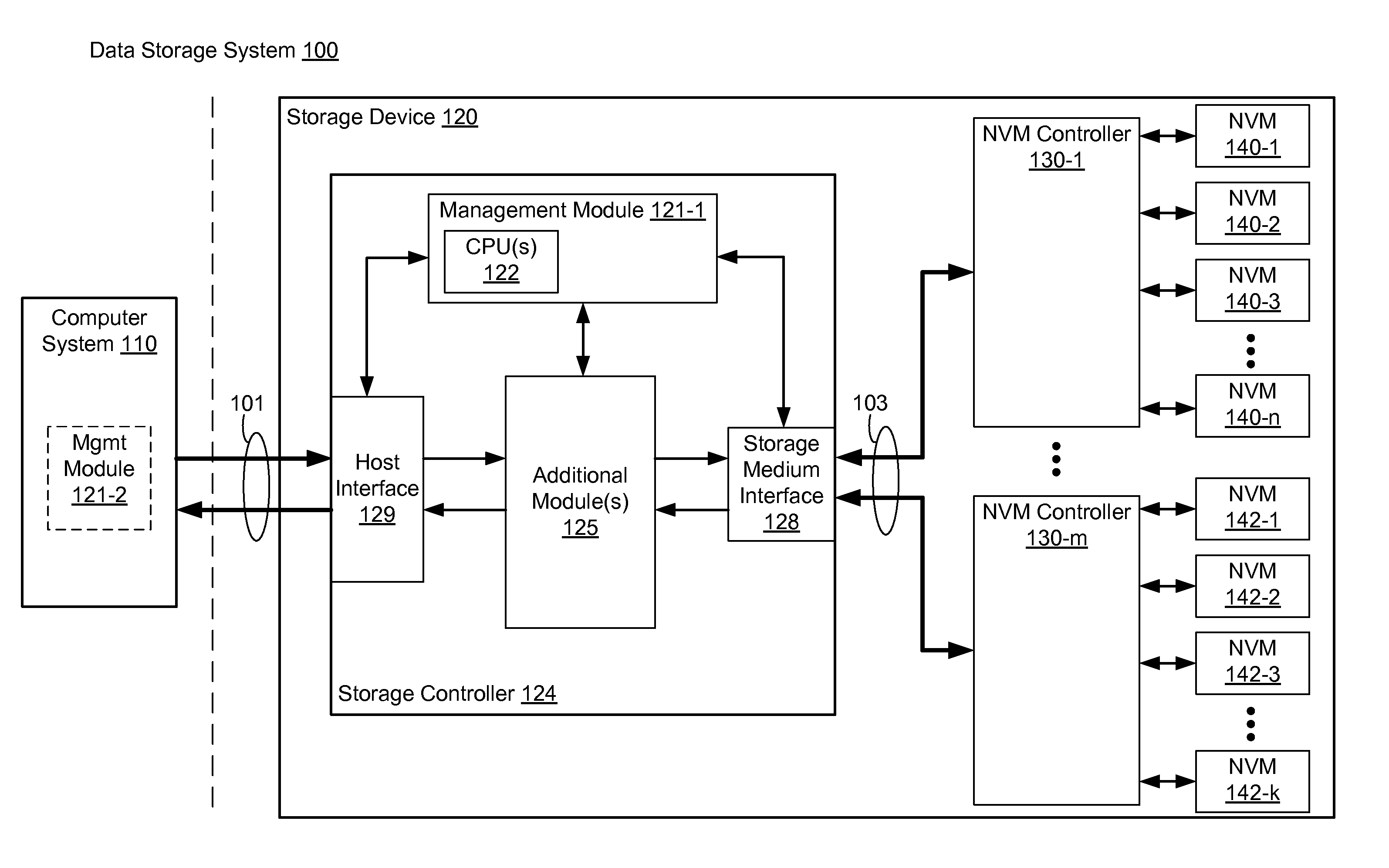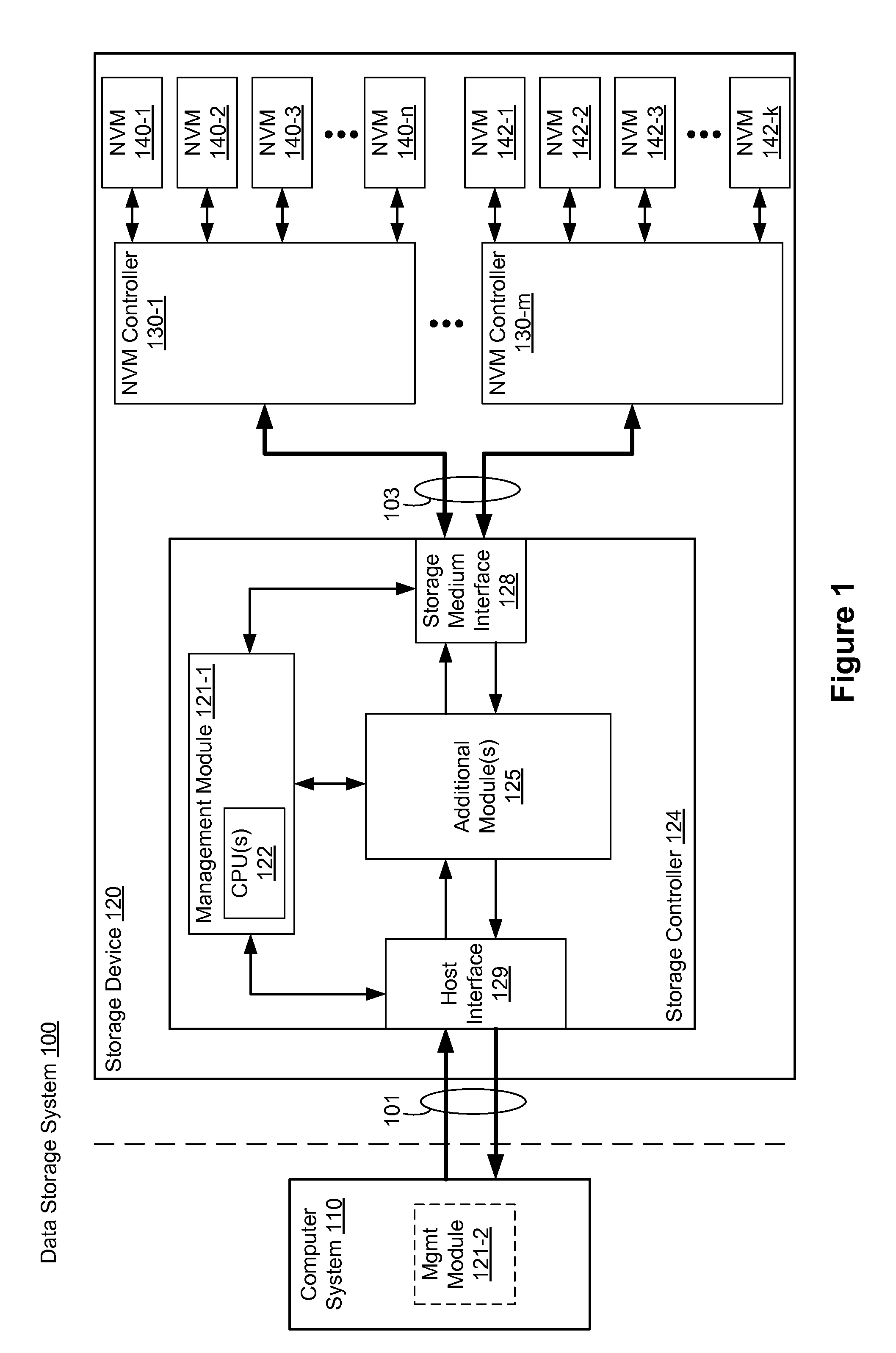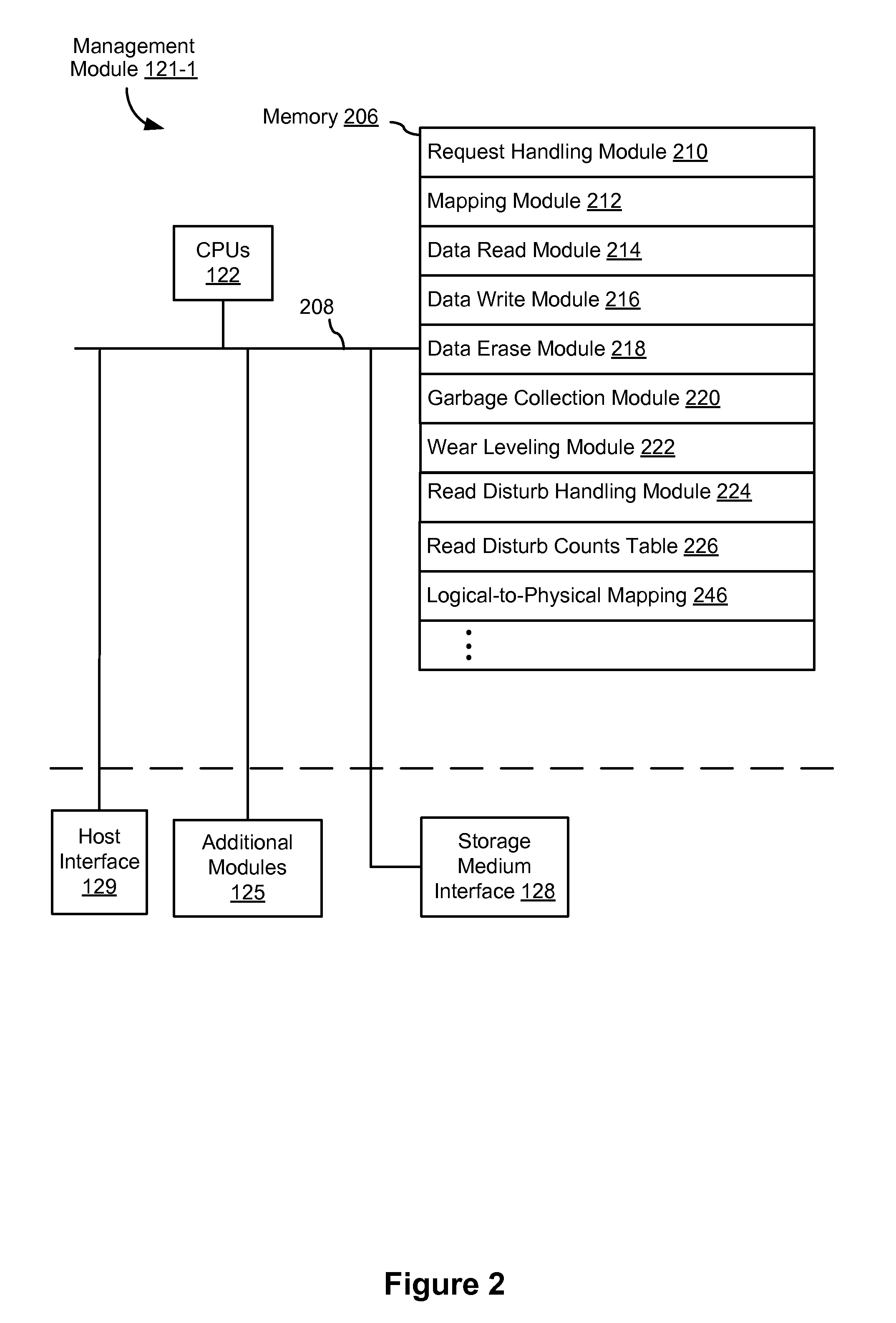Low Impact Read Disturb Handling
a low-impact, read-strange technology, applied in the field of memory systems, can solve the problems of data integrity damage, unnecessary write amplification, non-volatile block garbage collection, etc., and achieve the effect of reducing write amplification, avoiding garbage collection, and reducing garbage collection operations due to read disturbs
- Summary
- Abstract
- Description
- Claims
- Application Information
AI Technical Summary
Benefits of technology
Problems solved by technology
Method used
Image
Examples
Embodiment Construction
” one will understand how the aspects of various embodiments are used to manage a storage system with a storage device including one or more memory devices. In one aspect, a storage controller of the storage device is configured to perform operations with / on the one or more memory devices (e.g., flash memory device(s)). In some embodiments, the storage controller maintains multiple read disturb counts for each non-volatile memory block in the storage system, one for each of several zones of the block, and furthermore avoids performing garbage collection on memory blocks due to read disturbs unless a memory validation operation on the block is unsuccessful. As a result, garbage collection operations due to read disturbs are significantly reduced, which reduces write amplification.
BRIEF DESCRIPTION OF THE DRAWINGS
[0006]So that the present disclosure can be understood in greater detail, a more particular description may be had by reference to the features of various embodiments, some o...
PUM
 Login to View More
Login to View More Abstract
Description
Claims
Application Information
 Login to View More
Login to View More - Generate Ideas
- Intellectual Property
- Life Sciences
- Materials
- Tech Scout
- Unparalleled Data Quality
- Higher Quality Content
- 60% Fewer Hallucinations
Browse by: Latest US Patents, China's latest patents, Technical Efficacy Thesaurus, Application Domain, Technology Topic, Popular Technical Reports.
© 2025 PatSnap. All rights reserved.Legal|Privacy policy|Modern Slavery Act Transparency Statement|Sitemap|About US| Contact US: help@patsnap.com



